Note: For more reprinted Linotype maintenance material, and for general maintenance information, see these sections of Dave Seat's website http://www.HotMetalServices.com/:
See also the Information Resources and Bibliography section of Bill Spurling's http://www.linotype.org/ website:
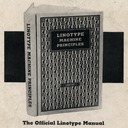
Maintenance Books
[Links to the presentations on linotype.org of Rogers' Linotype Instruction Book (1925), the anonymous Mergenthaler Linotype Machine Principles, and the Linotype Maintenance Manual.]

Maintenance Booklets
The "Linotype Life Extension" series, including the four "General Maintenance" booklets (and separate reprints of their maintenance schedules and lubrication charts) and "The Care & Maintenance of Matrices." Also the "Linotype Keyboard Practice" booklet, which for unexplained reasons is also a part of the "Linotype Life Extension" series. [TO DO: Instructions to Linotype Operators and Machinists]
Only a few machines were sufficiently different so as to require their own series of maintenance documents.

Comet-Specific Maintenance
Mergenthaler documents for Comet features supporting the Teletypesetter High-Speed Operation.
(But note that "Universal Comet" pots were installed on non-Comet machines. These are covered under "Pots," above.
For numbered Service Instructions relating to the Electromatic Safety, see Electromatic Safety Maintenance, below.
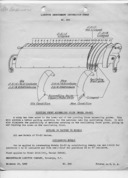
Linotype Improvement Information Sheets
Nos. 251 - 329. Index (but no Sheets) for earlier Sheets.

Lists
[NONE YET, but some references] I am not yet clear on the relationship, if any, between these "Lists" and the " Parts Lists," below.

Parts Lists
[NONE YET, but some references] I am not yet clear on the relationship, if any, between these "Parts Lists" and the " Lists," above.
See also the "Instruction Cards" collected in the Instructions to Linotype Operators and Machinists maintenance booklets.
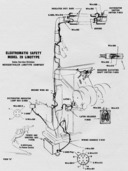
Electromatic Safety Maintenance
Three series of Service Instructions on the Electromatic Safety on various machines (29, 30, 33, 34, 35, 36).
Also "Service Instruction No. 16" on various adjustments of these machines when equipped with the Electromatic Safety.

Quadder Maintenance (Mechanical Quadder)
Also known as the "Double Quadding and Centering Device" (1930s), "Self-Quadder" (1940s), and (I think) simply the Mergenthaler Linotype Company Quadder (early 1950s).
The Mergenthaler Linotype Company produced several series of technical drawings for use in installation and maintenance (vs. drawings for use in manufacturing). In style some of these are closer to manufacturing drawings, while others are rather nice examples of graphical user documentation. To judge by the numbers on the drawings, thousands of them were done. Only a few survive.
The various sheets reproduced here were usually scanned in sections (often as many as 35 per sheet, overlapping) and stitched together digitally. At present I'm using the "Hugin" panorama tool under Linux for the stitching. These digital versions are far from perfect, but they should at least be useful.
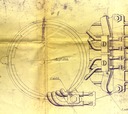
Diagram Sheets
These seem to have been a series similar to, but earlier than (?) the "Mailing Sheets" (q.v., below).
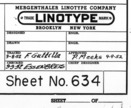
Mailing Sheets
These were engineering-style drawings, sometimes of large format, which gave installation and service procedures for various aspects of the Linotype.

Drawings of Unknown Provenance
One finds orphans in the old machinery.
Notes to self on using the open-source application Hugin and related programs on Linux for large scanned documents: Scan with significant overlap (50 percent?); minimal overlap means much more work picking control points manually. Set the HFOV to something small (2 degrees?) Larger HFOVs cause pincushioning (at best) and stranger perspective issues (at worst). The concept of HFOV doesn't really apply to a scanned image, but Hugin needs it. Let the "Assistant" calculate alignment. Then mess with cropping a bit in the "Quick Preview" window. Let the "Assistant" generate the panorama. Crop further in The GIMP. Convert from TIFF to PNG (70 percent lossless file size reduction) using GIMP or ImageMagick. Hugin processing can take quite some time with large images.
Hugin will automatically shrink ("downscale") images (percent set in Preferences -> Assistant). It might be better to do this in a batch with ImageMagick beforehand (more control over quality of scaling?) Or set to 100 percent and accept overhead.
All portions of this document not noted otherwise are Copyright © 2012 by David M. MacMillan and Rollande Krandall.
Circuitous Root is a Registered Trademark of David M. MacMillan and Rollande Krandall.
This work is licensed under the Creative Commons "Attribution - ShareAlike" license. See http://creativecommons.org/licenses/by-sa/3.0/ for its terms.
Presented originally by Circuitous Root®
Select Resolution: 0 [other resolutions temporarily disabled due to lack of disk space]